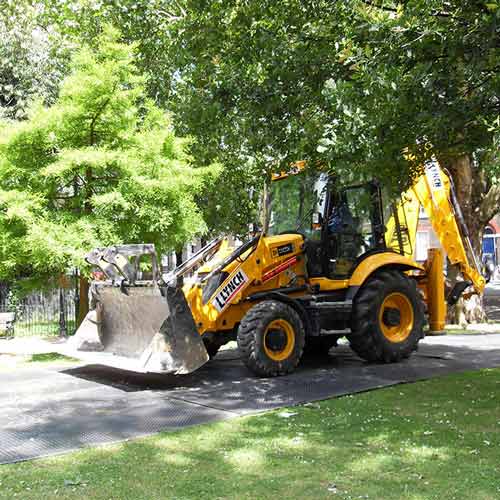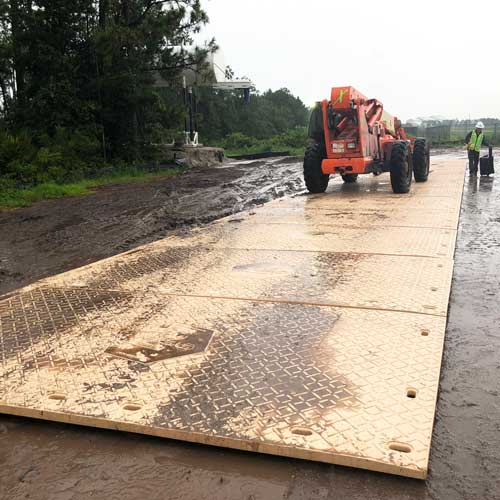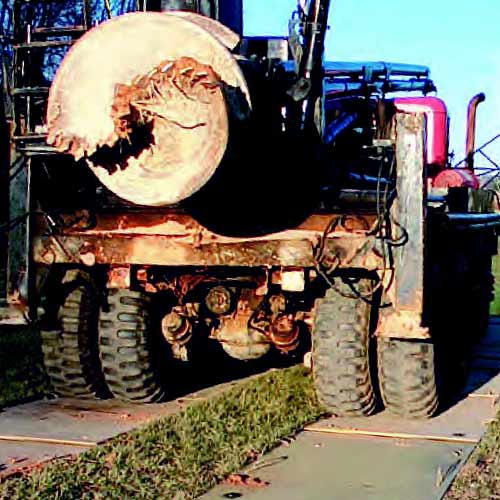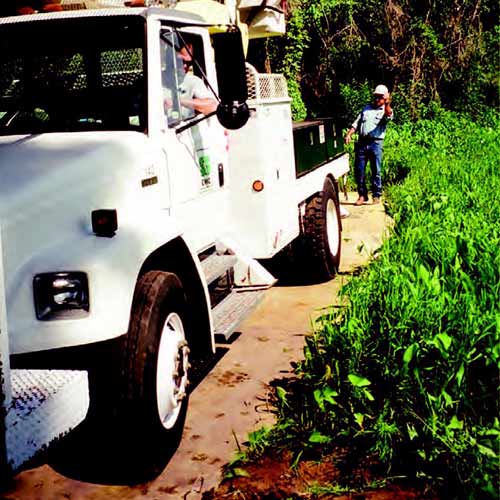How to Create a Temporary Road Using Mats
These mats give heavy equipment access to a remote area without tearing up the existing ground or risking becoming stuck, which would greatly delay the project. These thick mats provide a far more durable option for use at a construction site versus plywood, which becomes slick and splintered over time, creating a huge mess after the project finishes.
These mats vary quite a bit on the amount of weight they carry, which affects the complexity of the install. With a smaller, lightweight mat, a few people can move the products around and can place them into service by hand, whether it’s over a muddy field, a lawn, or a dirt track. Heavier mats likely will require the use of a forklift to move them into place.
Can You Install Lightweight Temporary Road Mats on an Acreage or a Construction Site?
One of the biggest benefits of temp road mats is the ability to be able to create a walkway or a vehicular roadway anywhere. However, if the mats are too heavy for someone to move by hand, they become a little less useful on an acreage or at a place where people don’t have heavy equipment around to line up the mats.Our lightweight mats are the ideal solution for this use case.
Mud-Traks Super Lite Ground Protection Mat
 For an option people can install by hand, consider the Mud-Traks Super Lite Ground Protection Mat. It measures 45 inches in width and 6 feet in length, and each unit weighs 58 pounds. (Other versions of this model measuring 8 feet in length are available, too.)
For an option people can install by hand, consider the Mud-Traks Super Lite Ground Protection Mat. It measures 45 inches in width and 6 feet in length, and each unit weighs 58 pounds. (Other versions of this model measuring 8 feet in length are available, too.)
The 6-foot units should fit in the beds of standard pickup trucks, making it easy to move the mats around the jobsite. Lay them end to end to create the roadway. With this kind of size, workers can move the mats in and out of place themselves, making them one of the most convenient options we offer.
TrakMat Ground Cover Mat
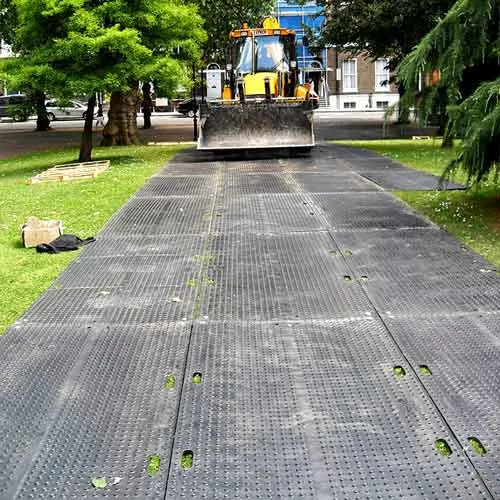 The TrakMat Ground Cover Mat consists of polyethylene plastic, offering a coverage size of almost 4 by 8 feet per unit. (We also offer a version of this mat that measures 3 by 8 feet.) With 78 pounds of weight per mat, a few people can work together to move these mats into place by hand, using the hand holes on the sides and ends of each mat.
The TrakMat Ground Cover Mat consists of polyethylene plastic, offering a coverage size of almost 4 by 8 feet per unit. (We also offer a version of this mat that measures 3 by 8 feet.) With 78 pounds of weight per mat, a few people can work together to move these mats into place by hand, using the hand holes on the sides and ends of each mat.
The TrakMat unit can support loads up to 90 tons. It has a slightly flexible design, allowing it to mold to mini-undulations in the ground, giving vehicles the stability they need to travel safely in the area without becoming stuck.
It’s available in a green or black color. It consists of 100% recycled high density polyethylene, making it an eco-friendly option.
How Do You Move Heavy Temporary Road Mats Into Place at the Jobsite?
For those who need maximum protection for the ground underneath the road matting and to protect against regular heavy traffic, look for the thickest possible mats.To install these heavy duty mats, which weigh several hundred pounds apiece, using a forklift will be the best solution, although some contractors and workers use hydraulic grabs to position the mats end to end or side to side. Then use spring steel straps with hex head bolts on the edges of each mat to securely connect it to an adjacent mat.
Ground Protection Mats System7
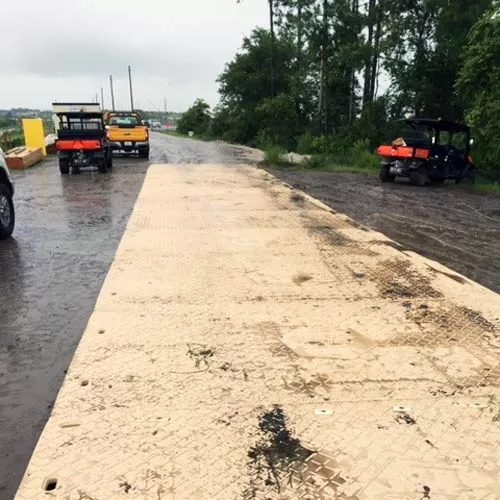 Our Ground Protection Mats System7 product is designed with maximum strength and durability in mind. It features a composite formula that withstands wear and tear better than almost any other product on the market.
Our Ground Protection Mats System7 product is designed with maximum strength and durability in mind. It features a composite formula that withstands wear and tear better than almost any other product on the market.
With dimensions of 8 by 14 feet and with a thickness of 4.25 inches, this is one of the largest and sturdiest temp road mats you can find. Its strength and weight ratio is unmatched.
It is a made in the USA product, so you can trust the measurement tolerances. Precise measurements make it easier to match up and connect the individual mats to create the roadway. The textured tread across the top of these mats helps vehicles avoid slipping and sliding as they move across the temp road.
How Do I Select the Best Temporary Road Mats?
Finding just the right mats for your temporary road requires thinking about the requirements you have for the road. You also want to think about the ease of installation, the amount of maintenance each product needs, and the amount of weight the mats can support.If you want some help with finding the perfect temp road mats, reach out to the experts on the Greatmats customer service team.
